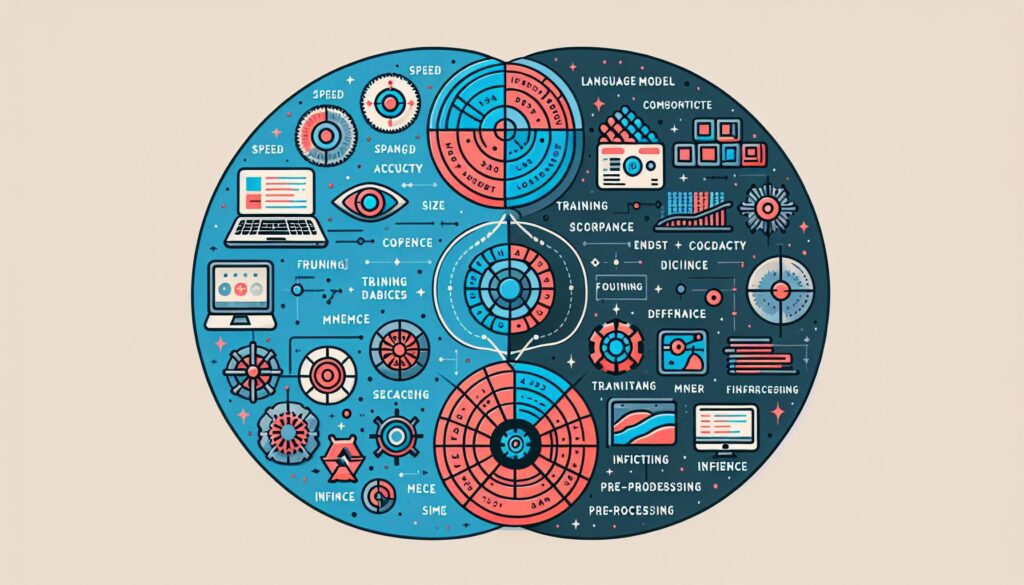In the rapidly evolving field of artificial intelligence (AI), language models have become indispensable tools for various applications. From chatbots and virtual assistants to content generation and translation services, these models have revolutionized how businesses operate. Historically, larger language models, with their vast datasets and immense computational power, have dominated the landscape. However, a shift towards smaller, more focused language models is gaining momentum. In the context of India, this shift is being driven by a need for efficiency, accessibility, and customization.
The Drawbacks of Large Language Models
Large language models, like OpenAI‘s GPT-4, are marvels of modern technology. They can process and generate human-like text with remarkable accuracy. However, their size and complexity come with significant drawbacks. These models require massive amounts of data, computational resources, and energy to train and deploy. This makes them expensive to maintain and operate, limiting their accessibility to only a few large organizations with deep pockets.
In the Indian context, where resources are often limited, the adoption of large language models is not always feasible. Companies may find it challenging to justify the cost of deploying such models, especially when the return on investment is uncertain. Additionally, the complexity of these models can lead to a lack of transparency, making it difficult to understand how they arrive at their conclusions. This lack of interpretability can be a significant hurdle in industries where regulatory compliance and accountability are critical.
The Rise of Small Language Models
Small language models, on the other hand, are designed to be more efficient and accessible. These models are typically trained on smaller datasets and require less computational power. As a result, they are more cost-effective to deploy and maintain. Indian companies, particularly startups and SMEs, are increasingly turning to small language models to meet their AI needs.
For instance, Haptik, a Mumbai-based AI company, has successfully deployed small language models to power its chatbot solutions. By focusing on specific use cases, Haptik has been able to deliver highly accurate and efficient AI-driven interactions without the need for large, resource-intensive models. This approach has allowed them to cater to a wide range of industries, from e-commerce to healthcare, without breaking the bank.
Customization and Localization
One of the most significant advantages of small language models is their ability to be customized and localized. In a diverse country like India, where languages, dialects, and cultural nuances vary widely, large language models often fall short. They are typically trained on global datasets that may not capture the intricacies of regional languages or local contexts.
Small language models, however, can be fine-tuned to address these challenges. For example, Reverie Language Technologies, based in Bengaluru, has developed AI solutions that cater specifically to the linguistic diversity of India. By using smaller, focused language models, Reverie can offer services in multiple Indian languages, ensuring that their clients can reach a broader audience. This level of customization would be difficult, if not impossible, with a large, monolithic language model.
Ethical Considerations
The ethical implications of AI are becoming increasingly important, particularly in India, where issues of privacy, bias, and fairness are at the forefront of public discourse. Large language models, due to their size and complexity, are often black boxes, making it difficult to audit their decisions. This opacity can lead to unintended consequences, such as biased outcomes or the misuse of sensitive data.
Small language models, being simpler and more transparent, offer a way to mitigate these risks. By limiting the scope and scale of the model, companies can ensure that they have greater control over the AI’s behavior. Wysa, an Indian mental health app, has adopted this approach. Their AI-driven chatbot is based on a small language model that is specifically designed to provide supportive and non-judgmental responses. By keeping the model focused and interpretable, Wysa can maintain a high level of ethical oversight, ensuring that their users receive safe and effective care.
The Role of Indian Companies
Indian companies are uniquely positioned to drive the adoption of small language models. With a deep understanding of local markets and a focus on cost-effective solutions, these companies are pioneering AI applications that are both practical and scalable. MyGate, a Bengaluru-based security and community management platform, is another example of a company leveraging small language models to enhance its services. By using a focused AI model, MyGate can efficiently manage visitor data, automate routine tasks, and improve communication within residential communities, all while keeping costs low.
Moreover, Indian tech giants like Infosys and Tata Consultancy Services are also exploring the potential of small language models to enhance their digital offerings. These companies recognize that smaller models can be more easily integrated into existing systems, offering flexibility and scalability that large models often lack.
The Future of AI in India
As AI continues to evolve, the demand for smaller, more efficient language models is expected to grow. In India, where resource constraints and linguistic diversity are significant factors, small language models offer a viable solution to the challenges posed by their larger counterparts. By focusing on efficiency, customization, and ethical considerations, these models are not only meeting the needs of Indian businesses but also paving the way for more inclusive and sustainable AI development.
In conclusion, while large language models have their place in the AI ecosystem, the future of AI in India lies in the hands of small language models. These models offer a balanced approach, combining the power of AI with the practicality needed to address the unique challenges of the Indian market. As more companies embrace this shift, small language models will undoubtedly become a cornerstone of AI innovation in the country.
